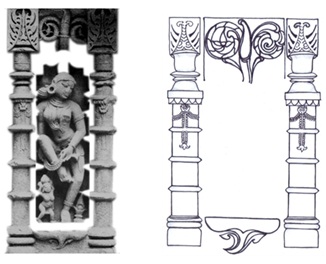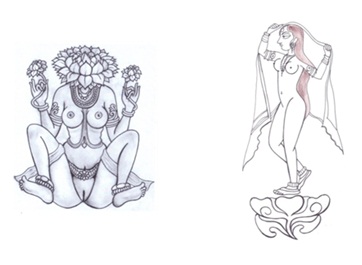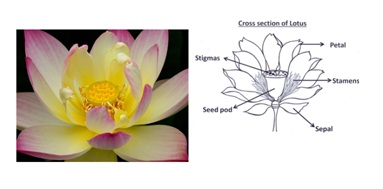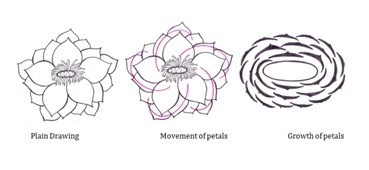
Citation: Chatterjee S. A Methodology for Estimate Safety Barriers Effectiveness on Construction Industry Incorporating Uncertainties by the Use of Fuzzy Sets. Ergonomics Int J 2017, 1(1): 000103.
*Corresponding author: Dr. Chatterjee Shekhar, Assistant Professor, Indian Institute of Information Technology, Design and manufacturing, Jabalpur, India, Tel: 9425150936; Email: schatterjee1971@gmail.com
Visual Culture addresses to aesthetic desire and various other kinds of sensory delight. Pleasure and values are closely related because high artistic principles are generally assigned to those artifacts that provide us with enduring gratification, that is a succession of pleasurable experience. They may be so complex and demanding that we have to invest considerable time and mental effort before any pleasure is gained.
The process of visual culture involves many levels of intellectual integration. It comes under the course of creation even though many creative minds complain that creation is hard work or even agony. Mythology and Art are inseparable, mythology narrates the stories of the subjects and Art follows the right dimension of presentation and representation. Here the elements of Art play one of the major roles to find out the correct form of the subject from the nature.
The stories of the Myth create emotions; perhaps emotions also need a virtual reality references to increase their range and subtlety for future use. Art, in short, may be nature’s own virtual reality. Human brain excels at visual imagery. Our brain evolved this ability to create an internal mental picture or model of the world. The use of metaphor in language as well as in visual art is well known. Indian temple structure is full of sculptures like the celestial nymph, ripe mangoes, lotus, the wish-fulfilling tree are a metaphor of the mysterious creative process, feminine principles, fertility and fecundity of nature. So there are multiple layers of metaphor and meaning in the form of Visual Culture.
Keywords: Visual Culture; Creation; Metaphor; Mythology; Mental Effort
Among the elements of popular flora, which has caught the imagination of India, from days of yore, is the lotus. It is a flower that predominates in the whole of Asia, and more so in India. It is closely associated with aesthetic manifestation of human form, decorative floral motif and since religion and mysticism stand uppermost in the mind of an Indian, by symbolism. Lotus had divine birth and has descended on earth according to mythology. The lotus-goddess is the moving force, which converts the slumbering potential power into actualization and transcends all mortal laws of causality. It is verily an instrument of divine dispensation. Growing in water brings increased potency to the lotus. It symbolizes creative power, fertility and abundance, a trait that associates on account of its association with the primeval sea which bore the goddess of wealth and the lotus flower. The lotus has come to symbolize all elements of prosperity and wisdom of the goddess of learning.
Although it grows in the mud, neither it is unstained nor untainted by the grossness, nor its leaf or flower wetted by the water which is essential for its existence. Metaphorically a truly wise man, similarly living in this world is unattached and unaffected by all the attachment of human life. It symbolizes rebirth, reincarnation and a allegory for purity. Lotus stands for self-creating and self-generating power. Born of aquatic origins lotus refers to the powers of the transformation of the primordial waters. Such self-generating power is demonstrated in the act of burgeoning with sunrise and fading at sunset.
The Garbhopanisad, Garbha means Womb in Sanskrit and Upanishad means Knowledge (part of the Vedas deal with knowledge or wisdom) calls ovary a lotus. Lotus is the material aspect of evolution; petals are its consecutive forms. Lotus which rises from the waters represents the three principles of creation, the creative breath, the primeval waters, and the principle of life. Water, the element in which the lotus rests, is a primeval element, obscure, chaotic and with no shape. Lotus means the waters and earth, is a leaf thereof which lies spread on the waters. Waters produce and preserve all creation even the earth, mountains, clouds etc. Water is the foundation of the universe; the world is based upon the water. It is the primordial element into which the celestial element penetrates in order to beget the germ of life. This golden germ gave rise to the cosmic tree the trunk of which is the axis of the universe. Lotus which resembles the waters in its capacity to generate, to create and sustain in its multiform aspects, and seats the creator as it were, it is equally entitled to the aqueous qualities.
The lotus-goddess is venerated on the rock carvings at Bharhut, Sanchi, Udayagiri and other locales. Buddha idols Rajgir, Kaneri, Gordhas, Burma, Nepal, China and Tibet show Buddha seated on a lotus. Padmapani or ‘lotus-in-hand’ is a famous Bodhisattva in the Buddhist pantheon. Lotus is venerated in Indian literature too as a synonym of excellence, form, shape, colour and delicate perfection. To describe feminine charms as well as face, arms, hands, eyes, feet etc. Indian poets readily turned to lotus for inspiration. The lotus is a beautifying element and an ingredient in beautification. As an ornament it can be worn on the head, on the neck, on the chest as a garland and also on the arms.
MethodsThe temple sculpture abounds in lotus motifs, in creepers, plant or flower form. Lotus appears continuously over five thousand years in Indian art and culture. Every deity in India is resting on the lotus flower. The idea behind such representation seems to be that the whole world is a lotus. The inverted lotus base indicates that the lotus supports the universe where gods dwell.
The ornate and intricate ornamentation on the doors, walls, facades and the arches of temples are veritable pictorial representation of mythology as much as of religion. Revelation, scholasticism of the philosophers, popular beliefs, ascetic experiences, yogic practices and intuition all interacted with one another to produce a pictorial exposition which is luxuriant display of art intellect, at the same time intertwining in this the popular legends and profound metaphysics. For these reasons, Indian Art is at once a combination of sensuous appeal, sheer magnificence, delight, popular imagination and intellect. Also architecture is not a spiritual phenomenon, but rather a model to be sought for a concretization of form which would invoke clear and vivid images. Here one example is taken to understand the depicted sculpture which manifests the sense of visualization from all angles [1-3].
One who stands or sits on the lotus or has a lotus pedestal is divinity itself. Since Gods do not have terrestrial births, their birth is on the lotus. Lotus birth and lotus seat thus indicate divinity and some super mundaneness. Lotus standing at the peak of the vegetable world is a form of the tree of knowledge, its roots a form of Brahmā, its supporting trunk Viṣṇu, and its top Sivā - the trinity who create, sustain and destroy the universe. Lotus symbolizes large heartedness. Of all the seasons it blooms.
The lotus motif in sculpture gives enormous diversity of form and symbolism. The petals, filament, seed vessel, colour, fragrance and bloom give unlimited forms. The petal itself is amenable to endless forms of artistic imagery and structural formation. The lotus medallions at Amravati and other places exude sheer grace, variety and imagination. Few variations attract the attention of interesting motifs commonly used in Indian monuments [4].
Lotus ceilings are fairly common in temples. The variety of lotus ceilings at Dilwara, Mount Abu is mind baffling with its ornate, elaborate and stylized carving. In the Ajanta paintings, lotus motif has been used in all possible ways along the whole length of the panels and adds beauty to the total scene.
Lotus can be classed into three categories according to the colour as red, blue and white. The petals of the red lotus are circular, that of, the blue lotus angular, and the white lotus is also angular-petal. The red lotus is often shown in full bloom. The central portion of the flower is also shown full of seeds. The blue lotus is shown either as all the petals in erect and upright posture and the outer line in loose and hanging posture towards the exterior. The inner part cupping and the seed containing the central part is made invisible.
A Form of Sensual DelightLotus is also an object giving sensual delight. The sweet fragrance is entrancing, the form of lotus is pleasing to the eye, and its sweet and pervasive freshness is captivating. Lotus is used in symbolic and suggestive sense in literature and the arts. It is ominous when bedecked, nourishing when eaten, energizing as a medicine and a symbol of sheer beauty. Lotus relieves the pangs of separation from the beloved as no medicine can. It dilutes the wrath of demons and is a cover for the gifts presented to the dead. Sculpture of Lajja Gauri, the symbol of feminine power but head is showing as blossom lotus as matured form of physical and mental command [5]. Her sexual organs are well developed and very sensuous. This sculptural form is known as Lajja Gauri, almost thousand years ago this form was worshiped as mother goddess in India but gradually it was disappeared also.
Kumud is a synonym for the lotus and means pleasure giving as a synonym. As a synonym for sheer beauty and sensual delight, lotus is personified in the nude goddess who is the headless and whose head is replaced by and transformed into a lotus flower. Her two hands are holding two lotuses. The lotus seems to signify that by itself the flame of love is short and the burden of separation is unbearable as the lotus cannot survive long outside the waters.
In the Kamasutra, Padmini has been defined as one who will have the following characteristics: face pleasing as the full moon, delicate body with flesh, soft as the mustard flower, skin tender and fair as the yellow lotus, eyes bright and beautiful as the orbs of fawn, well cut with reddish comers. Her bosom is hard, full and high; she has a good neck, her nose is straight and lovely and three folds or wrinkles cross her middle about the umbilical region. Her yoni resembles the opening lotus bud and her kama-salila or love seed is perfumed like the lily that has never burst. She walks with a swan like gait and her voice is low and musical. She eats little, sleeps lightly as respectful and religious as she is clever and anxious to worship the gods and to enjoy the conversation of Brahmanas.
Ṛgveda has more than one occasion used the word which may be taken to mean 'Sri' as 'glory' and 'beauty' which are attributes of Lakshmi. The Atharvaveda calls lotus a heart in symbolic significance. The Popular legend has it that Brahma; the creative element of the Trinity was born from the lotus-navel of Viṣṇu. Padmanabha (lotus-navel) is a popular incarnation of Viṣṇu.
Indian mythology views geography, natural science and metaphysics from the same vision of imagination.
The minute observation of lotus from inside and outside had done by the great thinkers of Indian culture. The internal structure of lotus is compared with the womb of the Universe which blooms at the Manasarovara Lake, the heart of the Himalayas wherefrom the Ganges, the Brahmaputra and the Indus all originate. The hill ranges of the Himalaya are also imagined as lotus petals. Floral structure of lotus was influenced the cultural thinker and they have realized that all organs arise sequentially in more or less in spiral phyllotaxis. Spiral phyllotaxis is often described in terms of fractions (e.g. 1/3, 2/5, 3/8, 5/13, etc.) that are made up of numbers in the Fibonacci series. The botanical name of the Indian lotus is Nelumbo Nucifera, which has the planar model of floral phyllotaxis.
The physiological structure of Lotus is very suitable to show the life force of Human life. This is the reason that Lotus is primarily a symbol of creation and a surrogate for the divine power with which to promote godly design. Wherever we find the concern of life there Lotus is closely associated with the idea of the creative process, fertility and the female principle of nature.
The creative potential came to be ascribed to lotus which was the creating instrument as well as the flower of creation. Lotus represents the symmetry in composition. In nature symmetry grabs our attention that’s why the artist or architect exploited Lotus to good use. The psychologists have found that the most symmetrical faces are generally judged to be the most attractive.
Symbols of the Lotus Motif as Life, Feminine Principles and ProsperityThe ancient seers of India studied the women body and its nature from various angles. They could understand the complexity of body system but it was not possible for everybody to comprehend. Through Art and Ritual they tried to manifest the complex system of the power of man and women’s natural strength. Lotus was very popular among Indians from the beginning of Indigenous culture. The growth stages of a Lotus from bud to flower attracted many cultural inventors to represent At the same time Lotus is representative as the way a new life is secured in the womb of mother almost nine months. Many rituals are performed during the nine months to protect the life and its natural growth [6].
There are some natural rules like Life is conceived when sprit fuses with matter. Birth is observed after a bee visits a blossom; the flower cannot turn into fruit until the pollen is transmitted. Seers, mystics and alchemist saw within the pollen, the seed, and the semen the spark of life that activates the generative power, the soil, and the womb. They felt rasa racing through feminine forms and soul radiant in masculine things. They concluded; Man is the keeper of the sprite, and women, mistress of matter. The whole physical and spiritual process had manifested through the metaphor of the life cycle of Lotus.
The water is symbolic of nourishing the cradle of life and universal motherhood. Laksmi (Goddess of wealth) [7] being a metaphorical expression of the lotus stands at the apex of all vegetation, which is fruition and abundance. Normally, as in Sanchi, Bharhut and Mathura she appears on a brimming vase of water, the purna-ghata, which is exuding as it were the waters of life, reminding one of the Vedic descriptions of her: She is river goddess personified; she is essentially Aditi, Prakriti, Maya, Apsarās, Urvasi and the maternal personification of the possibilities of existence. Lotus represents the fruit bearing and sustaining quality. The tree principle is the element of continuity between the Vedic and post-Vedic conceptualization of generation.
ConclusionIndian ancient mythology ascribes to cosmic waters, wherein lotus grows, the productive or creative power of the primal incubating on the waters of the primeval pre-existence by the Lord symbolizing the creative harmony of which lotus is the flower and creation. Indian thought of Lotus as a metaphor of the Universe itself, which represents the growth and energy of the Cosmos. The artists depict this sensation through the skilful use of many devices. We appreciate art as gourmet food for the visual centres in the brain. Even through the rules that artists exploit originally evolved because of their survival value. To achieve them, the artists must have used some of the same aesthetic laws used by modern artists, because the human brain emphasizes visual processing. Aesthetic is equally existing in birds, bees and butterflies etc., but the word ‘Art’ (with all its cultural connotations) is best applied to humans. The spread of sophisticated culture is seen only in humans. Complex language, symbols juggling, abstract thought, metaphor and self-awareness are all certainly unique to humans.
The water cosmology places water in the centre of the creative matter and activity. Water as the source of all life and creation is no new idea in Indian thought. Water is doubtless the first element to come into being and early Hindu mythology associated with waters and the treasures that lay hidden deep in the water. All treasures are in a sense embedded in the oceans which also hold life in lotus.
In ‘Upanished’ the self-consciousness is compared to the drop of water that rests on the lotus leaf but does not cling to it. The transcendence of mind and wisdom over matter could not be better illustrated than by the lotus. The muddy water of ignorance, fortune, avarice, greed, passion, and samsara keep the man grounded to the worldly sordidness. A wise man is ‘padma patram iva ambhasa’, like the lotus leaf untouched by water. His soul flower rises above in the firmament of knowledge to higher and purer peaks. All the apsarā (divine angle) figures are standing on lotus, while they are untouched, while his body may belong to the earth for its existence but they are all detached from the mortal matters of earth. The lotus is a pedagogic metaphor with meanings which remain un-grasped by the uninitiated by the enlightenment as the lotus blooms in response to the sun. Similarly the liberated souls or the enlightened men do not stand on this earth, but on the lotus which is enlightenment, wisdom itself. Water being the purifier, upholds the lotus, and one who stands on lotus must surely be pure, like the eternal law. Liberation is reaching from the muddy roots to the lotus flower.

Figure 1: Image from stepwell of Patan, North Gujarat, India, self collection.

Figure 2: Line drawing of Different lotus motifs from Stepwell of Patan.

Figure 3: A Form of Sensual Delight.

Figure 4: Cross Section of Lotus.

Figure 5: physiological structure of Lotus.

Figure 6: Symbols of the Lotus Motif as Life.
Chat with us on WhatsApp